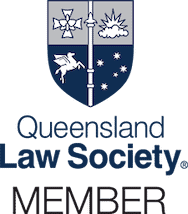Case note: Wolverson v Todman; Wolverson v Lisle & Hooper & Ors [2015] QCA 74
Background
Ms Julia Wolverson (Wolverson) was treated by a doctor for Multiple Sclerosis (MS). He had four MRI scans which demonstrated a Chiari Type 1 malformation. Wolverson alleges that her doctor failed to diagnose the condition and/or that he misdiagnosed her as having MS. Each of the radiologists reporting on the MRIs failed to identify the malformation.
In 2009, Wolverson sought the opinion of a different doctor. The malformation was ultimately confirmed through further MRIs. The doctor arranged for surgical treatment of the malformation, however, he was unconvinced that it would reverse any of her symptoms. Wolverson reported that a lot of her symptoms had resolved five months after the surgery.
Wolverson failed to commence proceedings within her limitation periods against the doctor and radiologists. She brought applications to extend the limitation periods. The primary judge dismissed the applications and Wolverson appealed the decision to the Queensland Court of Appeal (QCA).
Decision
The QCA allowed the application in respect of the extension sought for the proceedings against her doctor, but not for the proceedings against the radiologists.
Limitation of Actions Act 1974 (Qld)
Under the Limitation of Actions Act 1974 (Qld) (the Act) a Court may extend the limitation period in a Queensland personal injury case where it is satisfied:
- ‘a material fact of a decisive character’ relating to the claim was not within the means of knowledge of the person until a date after one year before the limitation period expires; and
- there is evidence to establish the right of action.
Establishing a right of action
One issue highlighted in the judgment, was the question of what kind of evidence may be taken into account in deciding whether an applicant has ‘evidence to establish a right of action‘ under section 31 of the Act, in a medical negligence case.
A key consideration in Wolverson, was whether the link between Wolverson’s surgery and the relief of her symptoms, was greater than a ‘mere possibility’.
Gotterson JA found that the primary judge should have taken Wolverson’s own reporting into account. She reported that a number of her symptoms had resolved (including left leg weakness, headache, nausea and vomiting) after her decompression surgery. Gotterson JA found that, if uncontradicted at trial, Wolverson’s evidence would be relevant to establishing a causal link.
Instead, the primary judge had preferred the reports of a number of medical experts, who were cautious in expressing their opinions about whether an earlier diagnosis of the malformation could have been of any benefit.
Of note was the following passage extracted in the judgment, from Mahoney JA in Fernandez v Tubemakers of Australia Ltd [1975] 2 NSWLR 190:
‘Medical science may say in individual cases that there is no possible connection between the events and the death, in which case, of course, if the facts stand outside the area in which common experience can be the touchstone, then the judge cannot act as if there were a connection. But if medical science is prepared to say that it is a possible view, then, in my opinion, the judge after examining the lay evidence may decide that it is probable.’
Gotterson JA concluded that the trial judge erred in deciding that Wolverson could not establish a right of action at the level required in Wood v Glaxo Australia Pty Ltd [1994] 2 Qd R 431.
To read the decision, click here.




